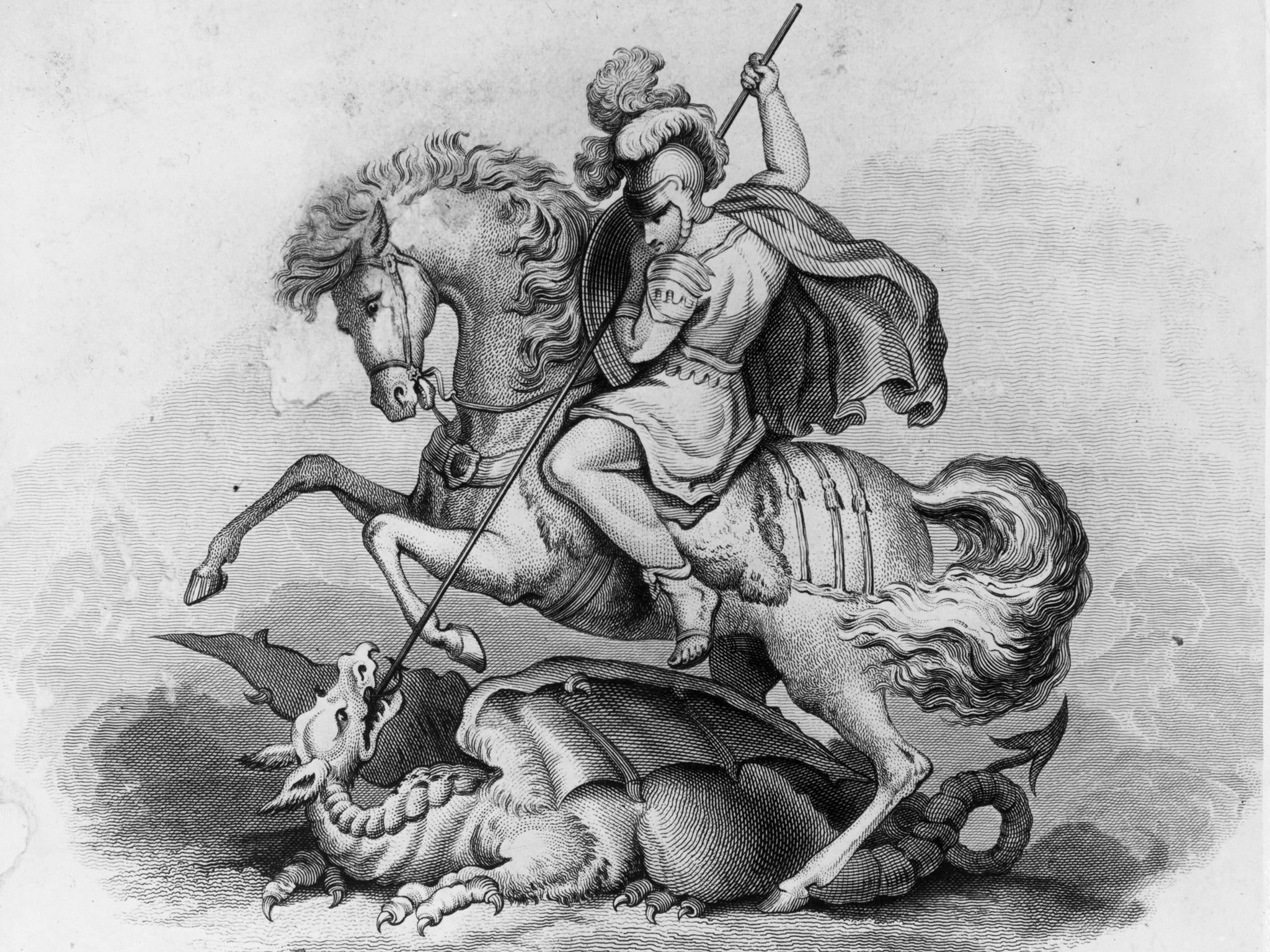St George’s Day: Who was the dragon-slayer and why is he England’s patron saint?
England – and several other countries – celebrate the saint’s day on 23 April

Your support helps us to tell the story
From reproductive rights to climate change to Big Tech, The Independent is on the ground when the story is developing. Whether it's investigating the financials of Elon Musk's pro-Trump PAC or producing our latest documentary, 'The A Word', which shines a light on the American women fighting for reproductive rights, we know how important it is to parse out the facts from the messaging.
At such a critical moment in US history, we need reporters on the ground. Your donation allows us to keep sending journalists to speak to both sides of the story.
The Independent is trusted by Americans across the entire political spectrum. And unlike many other quality news outlets, we choose not to lock Americans out of our reporting and analysis with paywalls. We believe quality journalism should be available to everyone, paid for by those who can afford it.
Your support makes all the difference.Friday 23 April marks the saint’s day of England’s patron saint St George.
English schoolchildren are always taught that he was a knight who slayed dragons but is there more to the historical figure?
Who was he?
According to legend, St George was a Roman soldier born in what is now modern-day Turkey in around 280AD and died around 303.
Very little is known about his early life but it is believed he was born to a wealthy Christian noble family.
When he grew up he became a soldier and joined the retinue of Emperor Diocletian.
In 303 Diocletian, as part of a crackdown on the growing influence of the Christian community, ordered that all Christian soldiers in the army should be expelled and all Roman soldiers be forced to make the traditional pagan sacrifice.
St George refused and denounced the edict in front of his fellow soldiers, declaring he was a Christian.
Diocletian initially tried to convert him with offers of wealth and land but when he refused he was beheaded on 23 April 303.
So what does he have to do with dragons?
The myth of St George slaying a dragon originally appeared in stories told by the mediaeval Eastern Orthodox Church which were brought back to Europe by the Crusaders in the 10th and 11th centuries.
According to one story, a town in Libya had a small lake with a plague-infected dragon living in it. The townspeople were gradually being killed by the dragon and started feeding it two sheep a day to appease it.
When they ran out of sheep the king devised a lottery system to feed it local children. One day his own daughter was chosen and as she was being led out to the lake St George happened to ride past.
He reported offered to slay the dragon if the people converted to Christianity. They all did, and the king later built a church where the dragon died.
If he was from Turkey how did he become the patron saint of England?
King Edward III made St George the country’s official saint just after he came to the throne in 1327.
According to historian Ian Mortimer, a patron saint did not have to be from the country they were born in – they just needed to embody the characteristics the kingdom wanted to project to the outside world.
After all, as well as England, St George is also the patron saint of Portugal, Venice, Beirut, Malta, Ethiopia, Georgia, the Palestinian terrorities, Serbia and Lithuania.
Edward III wanted to rebuild the strength of the English monarchy after the disastrous reign of his father – St George was part of his strategy to make England one of the most powerful and warlike nations in Europe.
This article was originally published in April 2016
Join our commenting forum
Join thought-provoking conversations, follow other Independent readers and see their replies
Comments